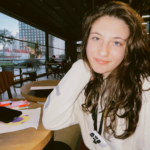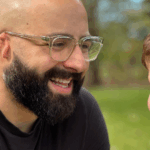MED-EL
Published Apr 29, 2015
Why My Parents Chose a School for the Deaf: Magteld Smith

Magteld Smith is the recipient of a MED-EL cochlear implant. She grew up in South Africa in the 1970s, well before paediatric cochlear implantation was widespread, and here she tells of what it’s like for a deaf student to be in a mainstream school then.
Deaf in a Mainstream School, Before Cochlear Implants
In spite of the fact that I succeeded in mainstream school and that spoken language allowed me to develop speech—both of which I’m proud of—I felt very much alone. As said before, I didn’t understand my own deafness. However I did have a small group of wonderful peers, including two friends who explained things said in class and the homework we had to do for the next day. I think that they also didn’t understand why I was “different,” but understood that I needed assistance.
Teasing and bullying are serious for any child, but are much more serious and devastating for a person with deafness and hearing loss. When I was in school there was a terrible, unhappy troubling girl who bullied me: she was used to going around and making stories up and claimed that I said this or that. I experienced it as a victimisation centred on my challenges of deafness.
Then during my teenage stage I was unable to trust hearing people. Contacts were difficult to maintain and the feelings of being abandoned or rejected left me at a loss. I avoided, when possible, social events which might have hurt self-esteem and instead invested my time in books and playing at home with our dachshund and the neighbour’s kids.
What’s it Like to Be Deaf?
In my opinion, children who are deaf are at greater risk of emotional-behavioural difficulties than their hearing peers. This behaviour from impatient teachers and social isolation caused me trauma. Trauma is unequal and the same injury may affect different people in different ways. How each deaf individual lives has nothing to do with their hearing loss as measured in decibels: their deafness, and the limitations this imposes on communications, is different for everyone.
At that time I couldn’t imagine adapting to deafness, its limits on communication and the inevitable difference between one’s self and one’s social and family environments.
[/mk_blockquote]
I experienced helplessness on a daily basis and feared the gaze of others, their attitudes and their unacceptable behaviour. I had to manage and tolerate situations where my self-esteem was rudely put to the test and were often accompanied by feelings such as frustration, irritation, resentment, helplessness and simply stupidity. In a mainstream school having visible hearing aids was enough to cause others to react negatively. Experiencing these situations over and over, while being unable to change my environment, was traumatic. So my journey in a mainstream school ended: the best option was to seek an appropriate school to accommodate me.
Our General Practitioner advised my parents to contact the De la Bat School for the Deaf, which his own son also attended. My parents made an appointment with them and we travelled 1300 kilometres to the school for my week-long evaluation.
A Ground-Breaking School for the Deaf
The De la Bat School was the first bilingual school for Afrikaans- and English-speaking students with deafness. It opened in in June, 1881, and initially students with either deafness or blindness were taught together. In 1905 it was split into two autonomous schools and the Institute for the Deaf was born.
The Institute for the Deaf was internationally renowned and hosted notable figures in the deaf community like Helen Keller. It was led by Dr. la Bat for 70 years, and when Mr. Badernhorst became principal in 1953 the school continued to develop itself with information that Badernhorst gained through educational tours in the USA and Europe.
In 1968, the school became a secondary school and was the first deaf school to offer an academic matric certificate with the Auditory-Oral Method, which is still the highest secondary qualification in South Africa. The certificate consisted of six subjects, including Afrikaans and English, and a few students completed various degrees at the Afrikaans-medium University of Stellenbosch.
Through the Institute for the Deaf these students and instructors showed that, with considerable effort from the student, it was possible for deaf children to develop good spoken language and literacy skills.
Magteld’s Evaluation and Admittance
I went through an intensive diagnostic and prognostic evaluation. Professionals such as speech therapists, occupational therapists, audiology services, psychologists and special need education teachers all were involved in the evaluation, and I was immediately accepted as a student.
My parents were told that I should have attended the school a long time ago, and I’ll talk more about this in my next post.
Thanks, Magteld!
MED-EL
Was this article helpful?
Thanks for your feedback.
Sign up for newsletter below for more.
Thanks for your feedback.
Please leave your message below.
Thanks for your message. We will reply as soon as possible.
Send us a message
Field is required
John Doe
Field is required
name@mail.com
Field is required
What do you think?
MED-EL


